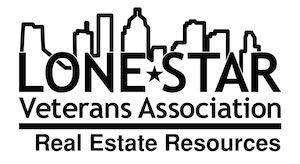If you are out looking for an apartment or condo right now, more than likely, you have heard the term “loft.” What happened to the simple days when apartments or condos were categorized by the number of bedrooms and bathrooms they had? Well, to confuse you a little more developers and marketers have decided to call some traditional apartments, lofts. And as the term has become more and more trendy, many have started to use the term very loosely to describe condos. In order to avoid some confusion when loft, apartment, or condo shopping lets examine what a loft really is.
The History of the Loft
The loft concept began in the 1960s in urban cities. It is traced back to New York City’s SoHo district and parts of London. Financially struggling artists (painters, musicians, sculptors, and more) couldn’t afford to have both a place to live and work. Rather than give up their passions, they resorted to combining their living and working space. True to their creative nature, the artists found that older warehouses with the tall ceilings and open space made for a perfect live/work space. Thus, the loft was born.
The Rise of Loft Living
Over the next few decades, the loft concept found its way into American pop culture. As is usually the case, the main stream mimicked the artists and gradually it became cool to live in a loft. And, as is the American way, once people didn’t use loft spaces out of necessity, lofts became more lavish. It isn’t uncommon to see multi-million dollar loft apartments and condos now. It isn’t uncommon to see multi-million dollar loft apartments and condos now. They still possess the characteristics of lofts: tall ceilings, open floor plans, and some exposed industrial features like brick walls and duct work. However, they have luxury finishes like granite counters, stainless appliances, exotic wood floors, and more.
Hard Lofts and Soft Lofts
There are still the old school (and new school) hard loft connoisseurs who want the original, edgy industrial lofts. They want to see the split wooden beams with faded, chipped paint (never mind that their might be lead in it) because it is original – and to many, original is better and nostalgic. These industrial, hard lofts have the rusted cast iron pipes running across the ceilings and down the walls. These lofts have uneven, cracked concrete floors and crumbled grout between exposed bricks in the wall.

Soft lofts are for those that love all the great qualities of a loft but want the finishes and amenities of a soft loft. They like the open spaces and the accents of an exposed duct or brick wall here and there but they don’t want to deal with some of the quirks of an all-vintage loft. This is for those that want a big kitchen you can prepare anything in, and a good bed to sleep in. If the soft loft buyer or renter were to go to Glacier National Park and had the choice of sleeping in a tent or a 5 star hotel, they would choose the five star hotel.
Anyway you look at it, “lofts” represent cool and marketers know it. They love to use the term “loft” to describe their apartment or condo development. And so we see more and more developments that resemble traditional apartments, referred to as lofts. It isn’t enough to say, “I want a loft,” to your Realtor anymore. You need to explain exactly what you are looking for. Do you want rustic or contemporary? And do you want a loft served hard or soft?

